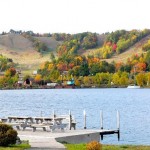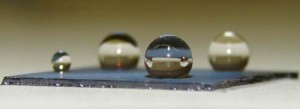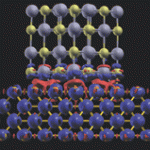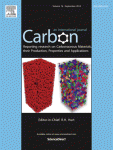Warp-Speed Raindrops
It’s a rain race out there. In the meteorological equivalent of breaking the light-speed barrier, new research shows that the smaller droplets in a rainstorm often surpass what appears to be the speed limit for rain.
“What surprised us was not so much seeing the superterminal drops,” says physicist and co-author Raymond Shaw of MTU, “but seeing the deeper, compelling patterns.” He explains that as rain falls harder, the fraction of superterminal, or speeding, small drops increases.
Read more at Science Magazine, by Phil Berardelli. This article was posted on June 12, 2009.

Further evidence for super-terminal raindrops
M. L. Larsen1, A. B. Kostinski and A.R. Jameson
DOI: 10.1002/2014GL061397
A network of optical disdrometers (including laser precipitation monitors and a 2-dimensional video disdrometer) was utilized to determine whether the recent reports of “super-terminal” raindrops were spurious results of drop breakup occurring on instrumentation. Results unequivocally show that super-terminal raindrops at small (less than 1 mm) sizes are ubiquitous, are measurable over an extended area, and appear in every rain event investigated.
Read more at Geophysical Research Letters, published by Wiley Online Library in 2014.
Confirmed: Some raindrops fall faster than they should
Five years ago, scientists reported that raindrops, especially small ones, often fall through the air much faster than they should. Some researchers have suggested that these “super-terminal” raindrops (ones traveling more than 30% faster than their terminal velocity, at which air resistance prevents further acceleration due to gravity) were fragments of larger drops that had splattered off the team’s instruments, with the smaller bits retaining the speed the larger drop had before it struck the instrument. But new research hints that the speedier-than-expected drops are the result of natural processes—and that, moreover, they make up a substantial fraction of rainfall.
Read more at Science Magazine, by Sid Perkins. This article was posted on August 26, 2014.






